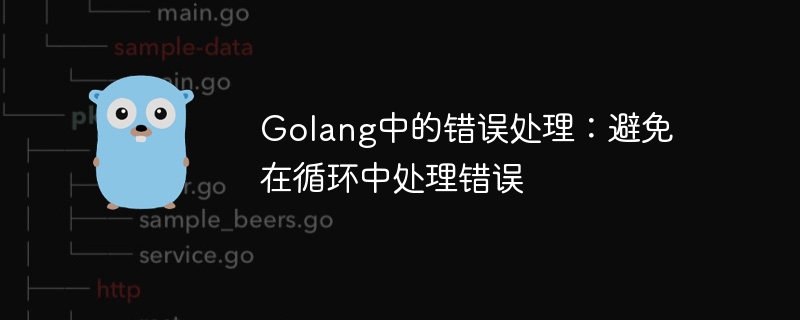

Error handling in Golang: Avoid handling errors in loops
Introduction:
Error handling is a very important part of programming, it can Help us catch and handle exceptions in code in a timely manner. Loops are frequently used statement blocks in programs. In order to ensure the stability and reliability of the program, error handling in loops requires special attention. This article will introduce how to avoid handling errors in loops in Golang and give corresponding code examples.
Error handling overview:
In Golang, errors are represented by values of typeerror. In a function or method, aerrorvalue is usually returned to indicate whether the operation was successful. If the operation fails, aerrorvalue that is notnilwill be returned, otherwise anilwill be returned.
When handling errors in a loop, we need to pay attention to several aspects:
error# When the ## value is non-nil, an error has occurred. We need to pass this error to the caller for handling instead of handling it in a loop.statement to break the loop.package main import ( "fmt" "log" ) func main() { nums := []int{1, 2, 3, 4, 5} for _, num := range nums { if err := process(num); err != nil { log.Printf("Failed to process number %d: %v", num, err) } } } func process(num int) error { // do something with num if num%2 == 0 { return fmt.Errorf("even number: %d", num) } // ... return nil }
processfunction to simulate the processing process, and use theerrortype to indicate whether an error occurs . In the loop in themainfunction, we process each element in thenumsslice by calling theprocessfunction. If theerrorvalue returned by theprocessfunction is non-nil, we will record the error message.
The above is the detailed content of Error handling in Golang: avoid handling errors in loops. For more information, please follow other related articles on the PHP Chinese website!
 How to solve 0xc000409 error
How to solve 0xc000409 error How to solve the WerFault.exe application error
How to solve the WerFault.exe application error How to define variables in golang
How to define variables in golang What are the data conversion methods in golang?
What are the data conversion methods in golang? What are the commonly used libraries in golang?
What are the commonly used libraries in golang? What is the difference between golang and python
What is the difference between golang and python How to solve Java large file read exception
How to solve Java large file read exception How much is one Bitcoin worth in RMB?
How much is one Bitcoin worth in RMB?



